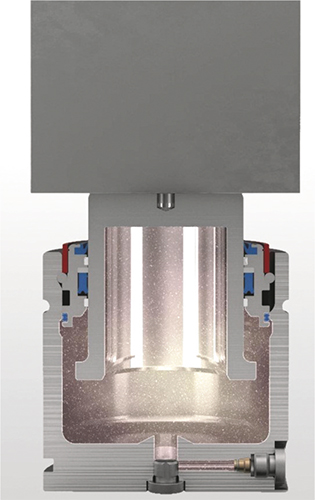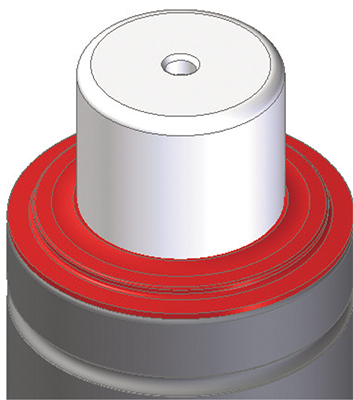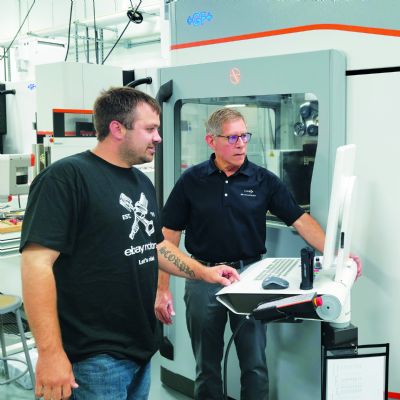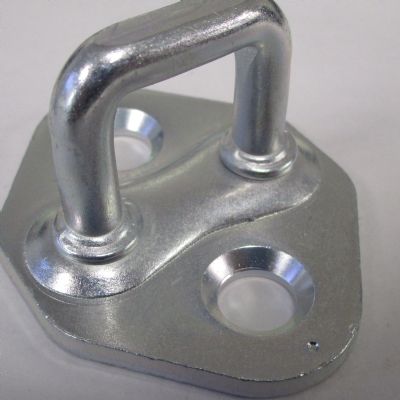 Lou Kren
Lou KrenGas-Spring Safety
February 1, 2018Comments
If we use a hammer correctly, it is not dangerous. But if we use it to hit our hand, suddenly it becomes very dangerous. The same holds true for nitrogen-gas springs. If used correctly, they are safe and effective. Gas springs can withstand all the working stresses for which they were designed. But they cannot sustain overstresses generated by incorrect usage. Gas springs essentially are pressure vessels, with all of the inherent dangers of pressure vessels. Fortunately, advancements have yielded gas springs that can help prevent dangerous overpressurization and/or take steps to reduce pressure. That said, users must keep in mind practices that result in safe, effective gas-spring operation.
To help MetalForming review proper safety practices for the die designers, builders and operators often working with nitrogen-gas springs, we reached out to Jim Glynn, president of Special Springs, LLC North America, with U.S. headquarters in Canton, MI. The company’s website offers a number of safety and design tips. We asked Glynn to identify common safety and design factors that should stay top of mind when specifying, installing and using nitrogen-gas springs, and here they are.
Allow for 10-Percent Stroke Reserve
All nitrogen-gas springs have a recommended maximum stroke length. It’s recommended that this maximum length not be approached.
“When designing a tool or specifying a nitrogen-gas spring, make sure to factor in a stroke reserve so that stamping forces do not drive a cylinder to the endpoint of its stroke,” says Glynn. “Do not use more than 90 percent of a cylinder’s stroke length. Following this rule helps eliminate an overstroke condition. An overstroked cylinder can be damaged in such a way as to cause the release of some components. Under pressure, these components can release at high speeds.”
Conscientious design not only provides the tool, part and press protection inherent in nitrogen-die springs but also maximizes their use, leading to more room in a tool to fit needed processes.
“Gas springs are rated based on their force on contact,” Glynn explains. “The more that a spring compresses, the higher the pressure, and the higher the force.”
In other words, compressing a nitrogen-gas-spring piston rod to nearly its maximum length can double the force.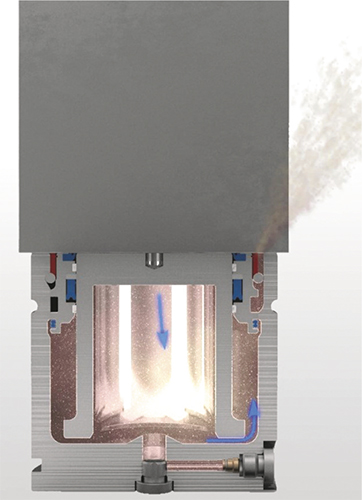
Some nitrogen-gas springs feature the ability to vent during overpressurized-cylinder conditions.
“Die designers, if they consider where force is needed, whether at the end or at the beginning of a stroke, may be able to reduce the number of cylinders needed in a die,” he says. “Perhaps an application does not require full force until the bottom of the cylinder’s stroke, in which case the compressed force may be much greater. Performing these calculations can save money and provide more room in the die.”
Use Mounting Options
Whether using mounts supplied with nitrogen-gas springs, tapped holes at the bottoms of cylinders or some other robust method, it’s best to affix springs to a tool.
“It’s a good practice that keeps the cylinders secure in the upper die shoe, or prevents a cylinder from vibrating in a pocket of a die,” Glynn says.
This helps ensure top pressure-providing performance from a nitrogen-gas spring.
Provide Counteracting Force Upon Pad Release
“Sometimes a pressure pad can stick during a specific process, perhaps an extrusion,” says Glynn. “Never release a pad from sticking without any counteracting force against the cylinder. In other words, don’t press a cylinder down and let it release with no opposing force.”Such repeated actions can cause a cylinder to fail and a rod to eject.






